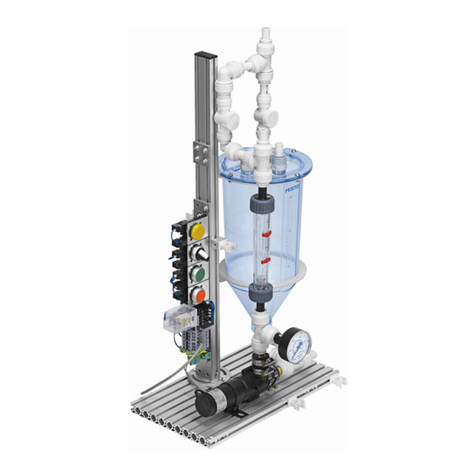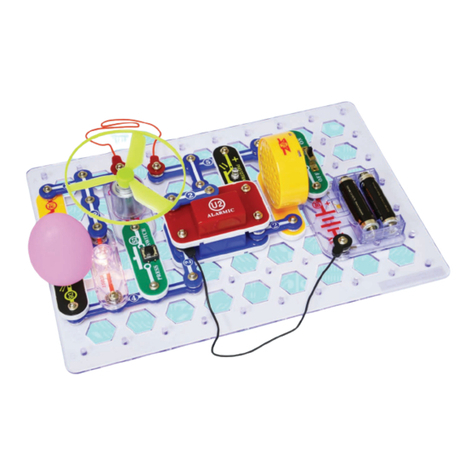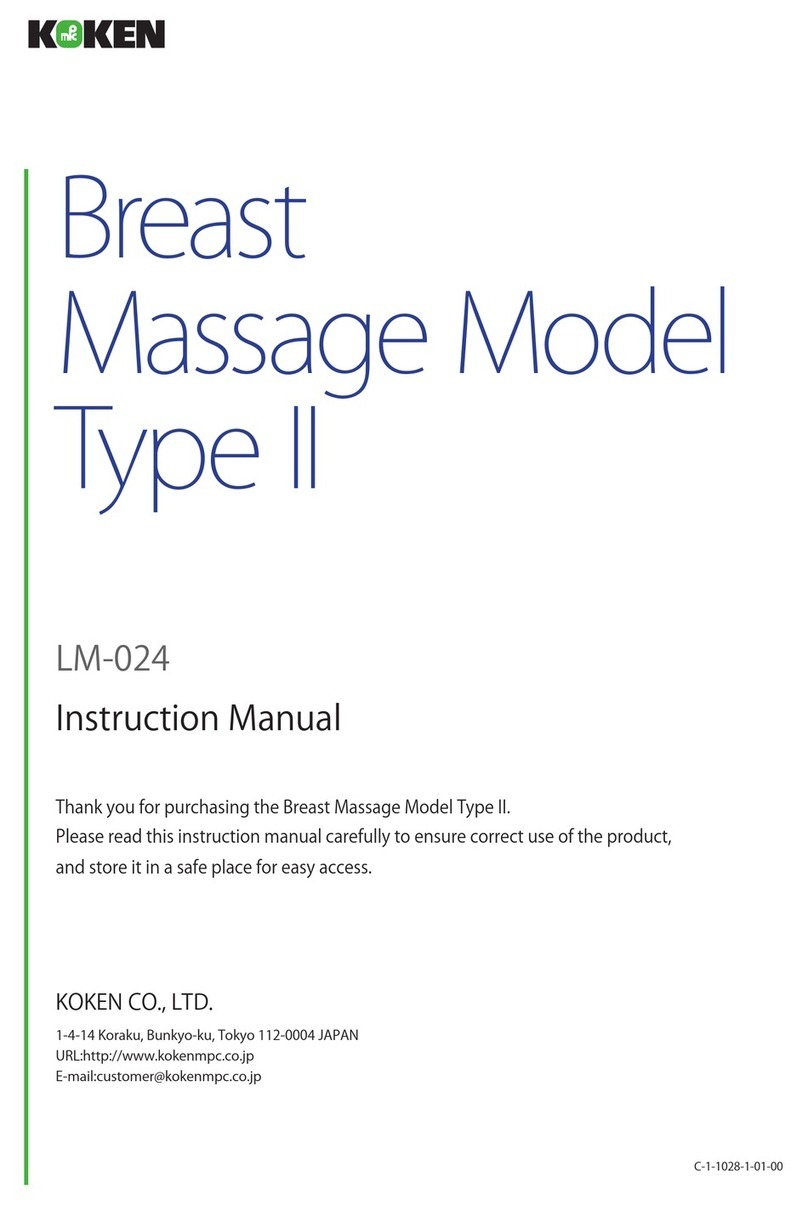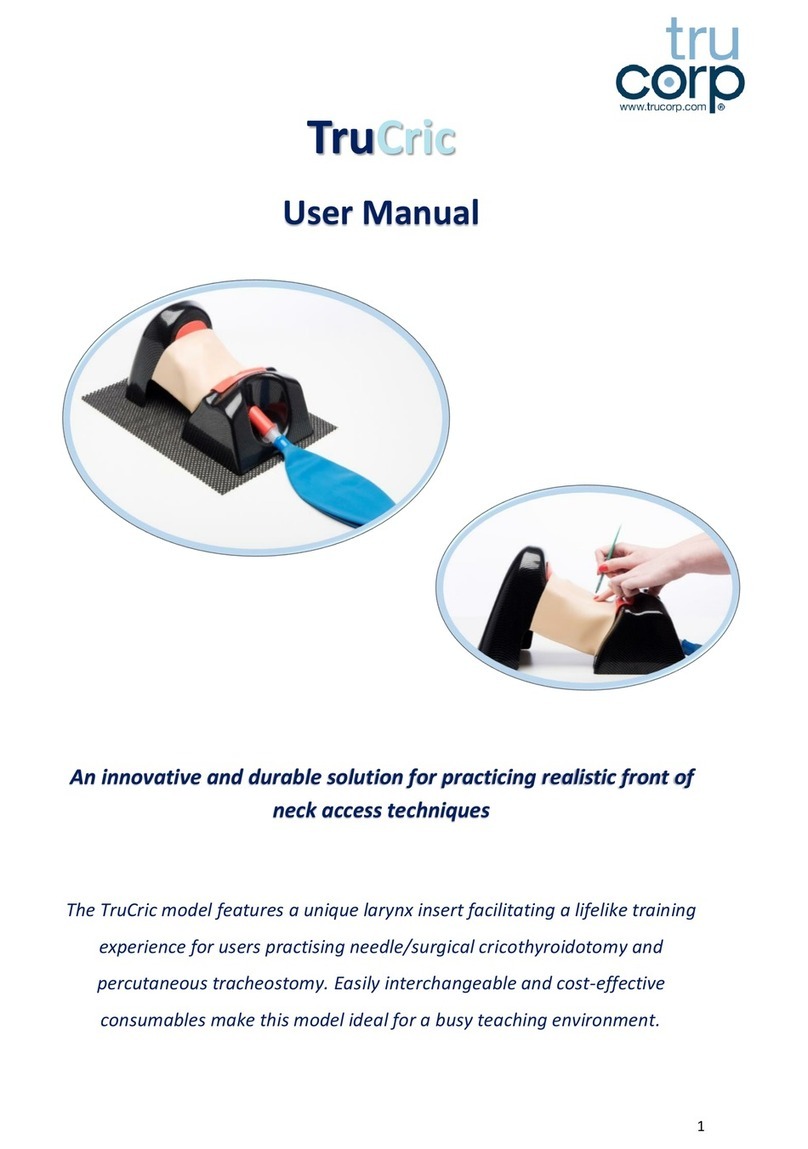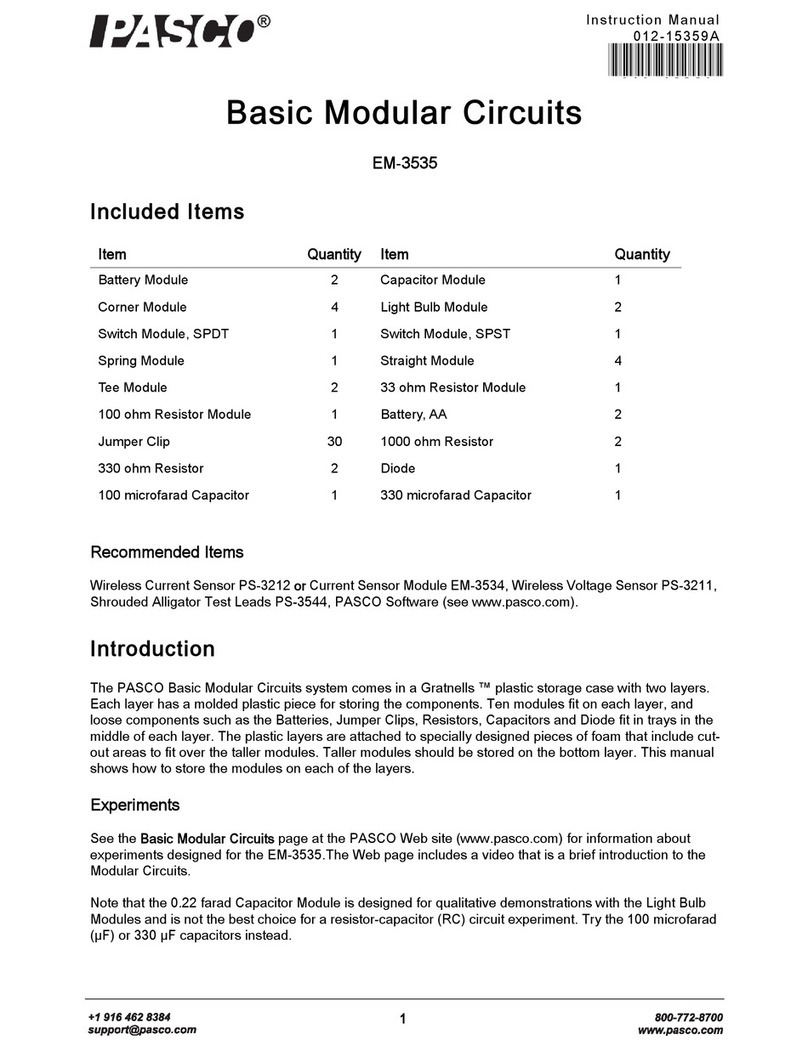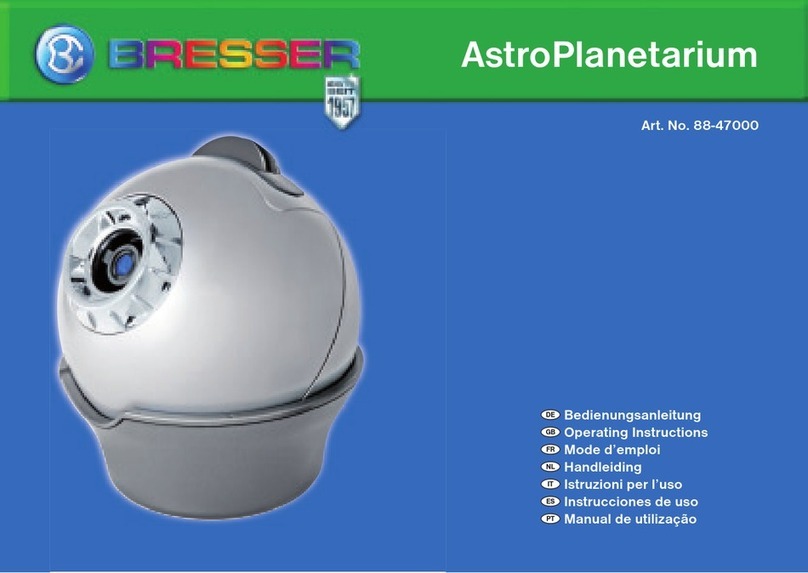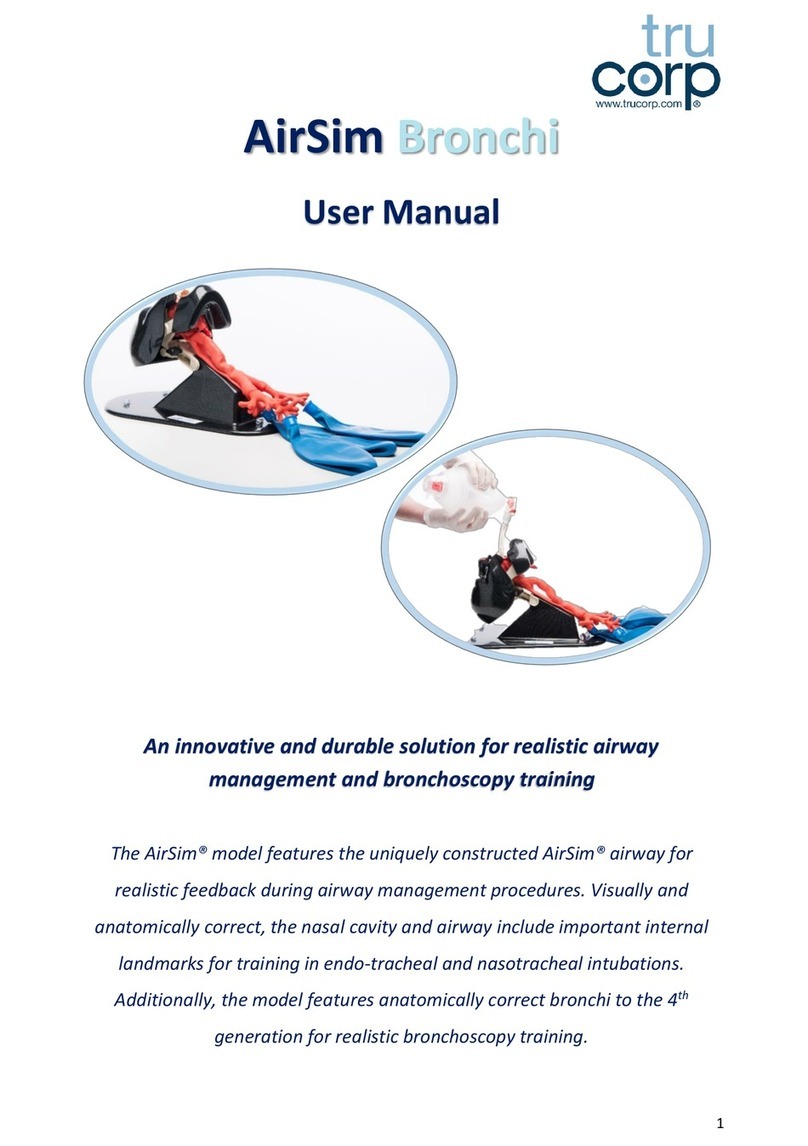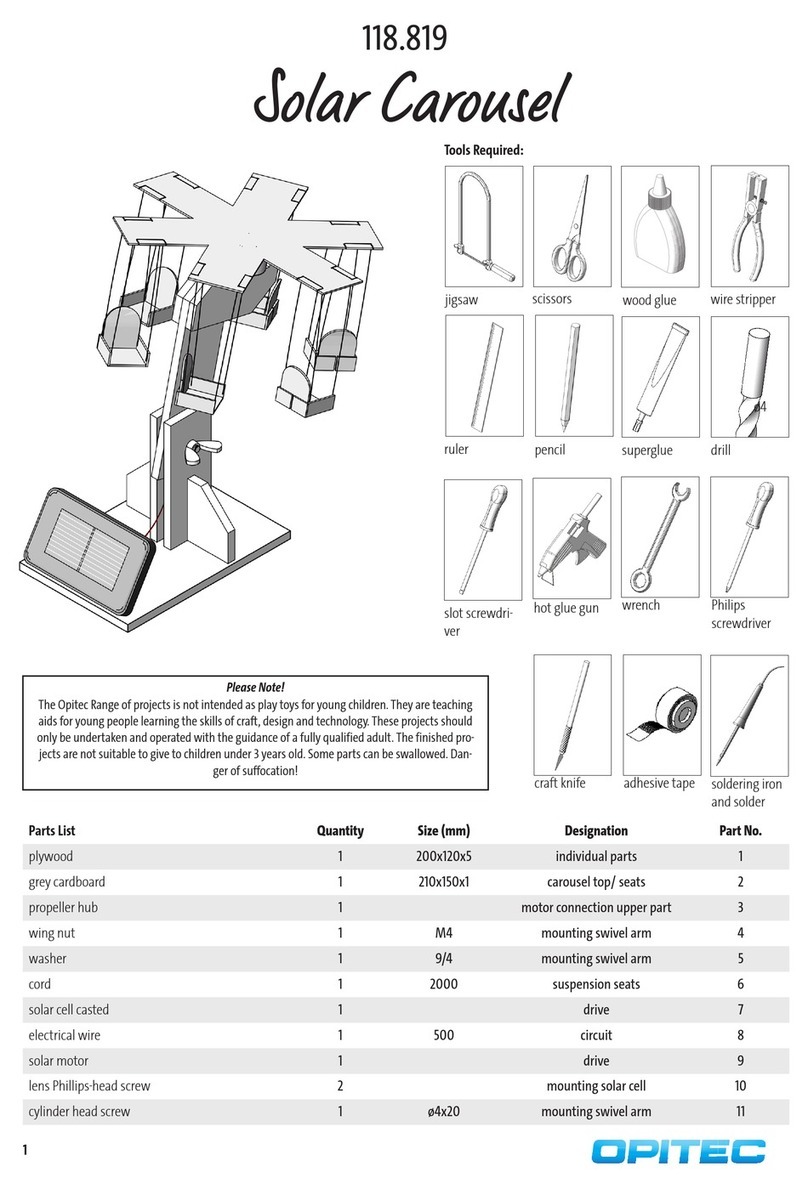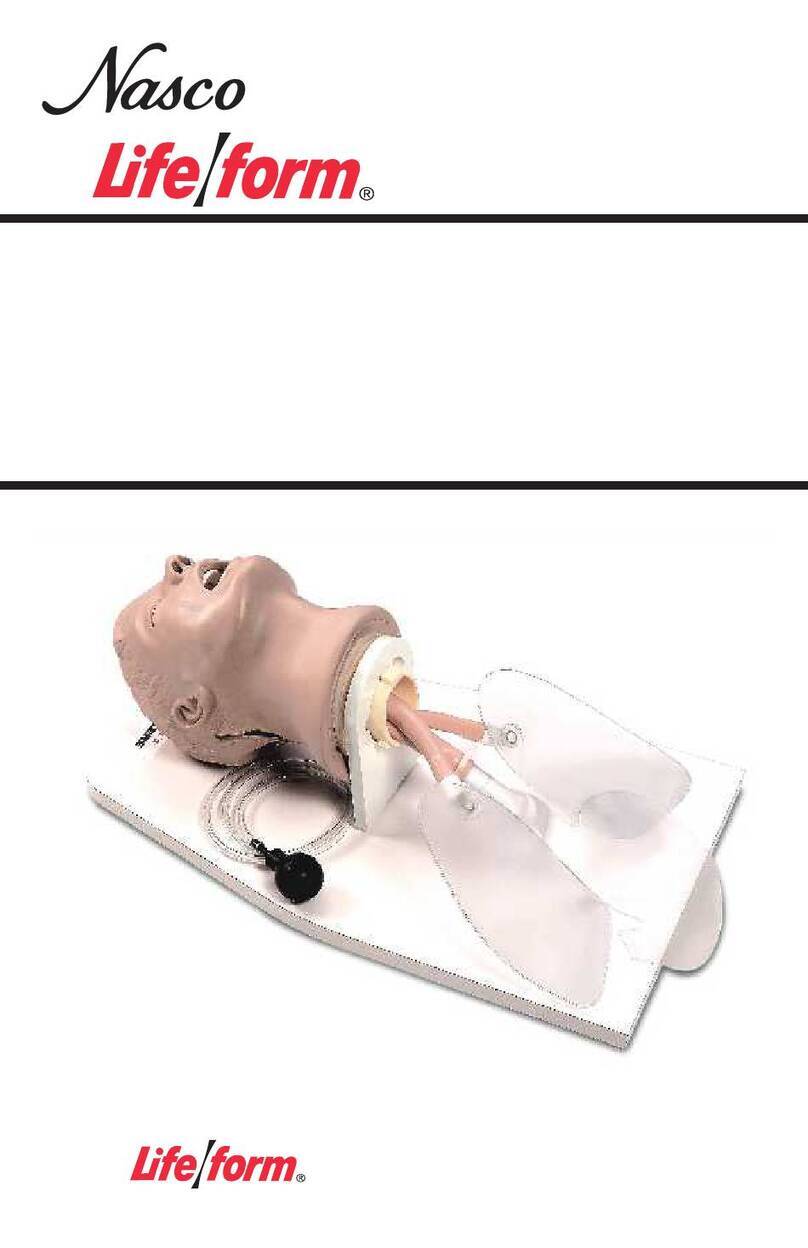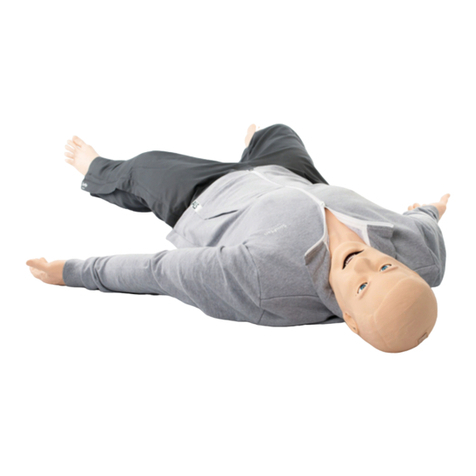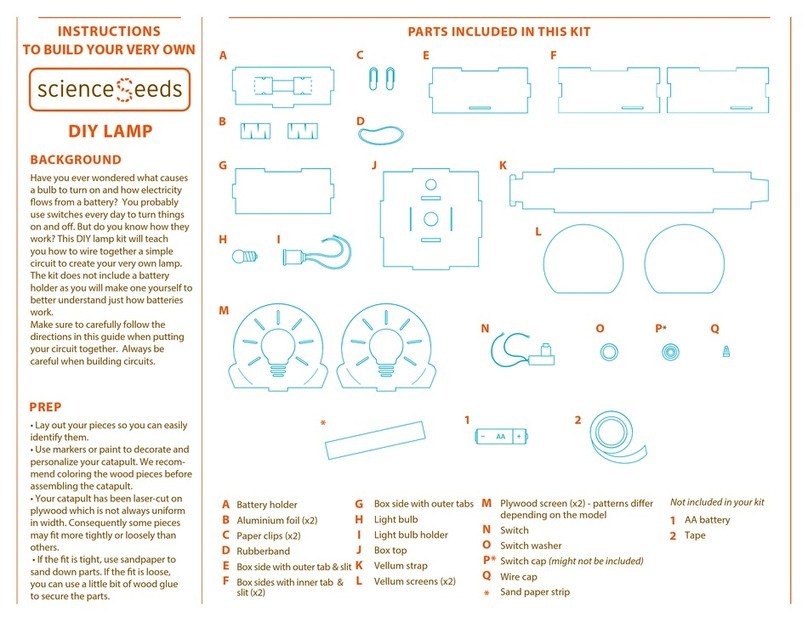Festo MecLab User manual

Festo Learning Systems
MecLab
Getting Started

© 2008 Festo Corporation 2 U
By A. Huttner
R. Pittschellis
M. Klaus
M. Hubsch
M. Striegel
T. Lust
J.Schwarz
Graphics: D. Schwarzenberger
Layout: F. Ebel 05/2008
Editor: F. Ebel
F. Zierau
Copyright 2008
This document and its contents are the property of Festo Corporation. No part of this
document may be reproduced, utilized, transmitted or disclosed in any form or by any
means without prior written consent of Festo Corporation
Festo Corporation 395 Moreland Rd. Hauppauge, NY, USA 11788

© 2008 Festo Corporation 3 U
Table of Contents
I
ntroduction
4
C
ourseObjectives
5
S
afety
6
Training Systems Operations 7
O
verview 9
C
ommissioning 14
SamplePrograms 15
S
afetyandMaintenance 16
Stack Magazine Station 18
C
onveyorStation 40
H
andlingStation 56
L
essonPlanning 77
P
rojects 86

© 2008 Festo Corporation 4 U
Introduction
This workbook contains both information and exercises designed to introduce the student to
basic automated systems components commonly used in industry.
The information is intended for use in a mechatronics environment and is aimed at supporting
continued education in industrial automation. The topics cover basic components used in in-
dustrial automation. It also provides exercises for developing pneumatic and electrical sche-
matics using FluidSim-P software. Overall the topics are intended to prepare the student to
study more advanced systems.

© 2008 Festo Corporation 5 U
Course Objectives
Upon completion of the exercises in this workbook, the student will be able to:
• Identify machines and their function in a process.
• Familiarization with industrial components.
• Familiarization with industrial component symbols and designations.
• Understand the term “sequence of operations”.
• Become familiar with pneumatic and electrical schematics.
• Understand control of linear actuators.
• Understand principles of relays.
• Understand limit switches.

© 2008 Festo Corporation 6 U
Safety *
Due to the potential hazards in any automated system, good safety practices are important in
the classroom, as well as on the production floor.
Students should never be allowed to place their hands on or near the system while operating.
Safety glasses should be worn around the equipment during operation.
*See also page 7, “Operation of the Festo Training System,” for
additional safety considerations.
All information in this workbook is intended for educational use only. It has
been carefully compiled and checked, and we believe the material to be accu-
rately presented. However, Festo Corporation assumes no responsibility for
published technical errors. Additionally, Festo Corporation assumes no re-
sponsibility for the safe and/or satisfactory operation of any machine.
All information in this workbook is intended for educational use only. It has
been carefully compiled and checked, and we believe the material to be accu-
rately presented. However, Festo Corporation assumes no responsibility for
published technical errors. Additionally, Festo Corporation assumes no re-
sponsibility for the safe and/or satisfactory operation of any machine.

© 2008 Festo Corporation 7 U
Operation of the Festo Training System
Festo training systems have been designed for ease of use by both the student and the in-
structor.
Compressed air should be handled with respect. Care should be taken to ensure that com-
pressed air is not directed at open cuts or against the skin, since serious physical damage
and/or dangerous embolism may result.
Compressed air should be applied to the service unit at the port next to the regulator/filter.
Air service for the automated system is drawn from the right side of the service unit. The ser-
vice unit is fitted with a normally closed 3/2 directional control valve with a red knob. The
valve is opened to provide air to the manifold by moving the knob in line with the direction of
airflow. All connections should be made with this switch turned off.
All pneumatic components are fitted with quick-connect air line fittings. Tubing to be con-
nected to these fittings should be cut squarely. Tubing is pushed into the fitting until a resis-
tance is felt; this is a metal ring. The tubing is pressed further until it stops. The tubing is
then checked by pulling gently back on the tubing. Leaks at the quick-connect fittings may
sometimes be traced to failure to fully set the tubing in the fitting. Another common cause of
air leaks may be a tubing end not cut at a shallow angle or tubing, which has become worn
and ragged through use. These tubing faults may be corrected by cutting a short section
from the end of the tubing to expose a fresh surface.
The instructor should check the connections on the circuits to ensure that the tubing is se-
cured properly before the circuits are pressurized. Compressed air escaping to atmosphere
from a loose and uncontrolled tube will cause the tube to whip, therefore safety glasses
should be worn whenever students or instructors are working or observing any of the auto-
mated systems.

© 2008 Festo Corporation 8 U

© 2008 Festo Corporation 9 U
Getting Started with Festo MecLab
Overview
Automation technology has become increasingly important in engineering. It helps to im-
prove both working and living conditions by ensuring high productivity and quality while at
the same time satisfying the ever-growing need for technological know-how.
Automation technology combines knowledge from virtually all other technical sciences. This
interdisciplinary field could not have developed without the fundamentals of electrical, me-
chanical and process engineering as well as information technology to name just a few.
We see and use automated technical systems every day. Escalators, automatic doors and
ATMs. At the supermarket, our groceries are move by conveyors which seem to “know” ex-
actly when to stop. In this sense, automation technology is everywhere. Everyone is regularly
confronted by “something” that can be classified as an automated system. Thus technical
education must emphasize this technology in order to keep up with the demand for skilled
workers.
Training should include:
− Overview of automated systems.
− Developing skills in the use of automated systems.
− Developing skills in the commissioning and maintenance of automated technical
systems.
In addition, training must be designed so that students are given the opportunity to work with
technology, investigate its effects and discover their own capabilities.
Automation technology is one of the most challenging subjects because of its complexity. It
can not be taught through lectures alone. Students must be given hands-on practice with
automated technical systems in order to observe and understand how subsystems and com-
ponents interact. They must be able to disassemble and assemble a system.
MecLab®, developed by Festo Learning Systems, includes a stack magazine, a conveyor
and a handling station. These simulate parts of an automated production line. It is designed
to familiarize students with automated technical systems.

© 2008 Festo Corporation 10 U
Getting Started with Festo MecLab
Overview
MecLab® is a modular multimedia teaching and learning system. It is supplemented with:
− Computer software
− Video
− Technical drawings
− Diagrams
The combination of theory and practice is an essential aspect of MecLab® and its compo-
nents. For every theory related to engineering sciences, there is a corresponding applica-
tion.
The connection between theory and practice will encourage students to put in to practice
what they have learned. Additionally students can learn how to analyze practical applications
to prove a theory.
Individuals do not acquire a skill by simply listening to a description of the skills, rather they
learn by doing. It is in the “doing” where problem solving skills are developed.
Theory and practical applications of automation technology can be addressed with Me-
cLab®, including:
− Types of control systems.
− Fundamentals of sensors.
− The link between sensors and drives in automated systems.
− Basic logic functions.
− Basics of programming automated systems.
MecLab® is intended for use in technically-oriented subjects. Basic knowledge of production
engineering, mechanical engineering, electrical engineering and information technology is
helpful, but not essential. Basic knowledge, such as physical fundamentals of drive and sen-
sor technology, relays or logic operations can be learned with the help of the appropriate
theory section as well as the exercises. The focus, however, should be less on teaching fun-
damentals than on applying them.

© 2008 Festo Corporation 11 U
Getting Started with Festo MecLab
Overview
The MecLab® learning system consists of three stations that carry out the following func-
tions:
− Storage and separating
− Transporting (conveying)
− Handling.
These three processes are typical for all automated production.
Figure 2.1 shows a production line that manufactures formed sheet metal parts. The material
is transported by means of a roller conveyor (3) to the machining stations (1, 2, 7), where it is
shaped. The first robot (4) places the sheets from the conveyor into a magazine (5 storage),
the second robot (6) takes the sheets from the magazine and feeds them to the third machin-
ing station (7) (handling and separating functions).
Figure 2.1: Automated manufacture of bent sheet metal parts

© 2008 Festo Corporation 12 U
Getting Started with Festo MecLab
Overview
The MecLab® stations perform the following functions:
Stack magazine station:
Stores and separates work pieces. An additional function, either “stamping” or “insertion”,
can be performed by the stamping unit.
Conveyor station:
Transports work pieces. An additional function, “sorting” or “rejection”, can be performed by
the ejecting solenoid.
Handling station:
Transfers work pieces between two points which can not be covered by conveyor.
The function of each station can be modified by adding or removing components. For exam-
ple if the ejecting solenoid is removed from the conveyor station, it can still convey but no
longer sort. If the solenoid is moved from one side of the conveyor to the other, the deflector
becomes a stopper.
Stations are controlled using FluidSIM® simulation and control program in combination with a
modified EasyPort. This allows FluidSIM® to read sensor signals from the stations and to ac-
tuate the drives of each station. It is also used to connect the stations with the USB interface
of the PC.
The software contains sample programs designed to help the student “get started” with pro-
gramming. Since the Meclab system is made of industrial components, it is also possible to
perform “manual override” operations.
Students are encouraged to use the provided tools to disassemble and reassemble the sta-
tions. The stations can be used independently or joined together to form a production line.

© 2008 Festo Corporation 13 U
Getting Started with Festo MecLab
Overview
The Meclab system consists of the following:
− 1 compressor for supplying the stations with compressed air
− 6 licenses of FluidSIM for MECLAB® simulation and control program
− 3 modified EasyPorts for connecting the stations to a PC
− 3 power supply units for supplying power to the EasyPort
− 3 sets of workpieces
− 3 sets of tools and small parts
− All instruction material (e.g. this book) on CD-ROM
The following information can be found on the supplied CD-ROM:
− Introduction: Teaching with Meclab (this document)
− Instructions for commissioning the three stations
− Theory section: Explains key technologies, components and other relevant information
− Exercise sheets: Designed to assist the student in becoming familiar with automated sys-
tems , relevant technologies and project planning
− PowerPoint presentation

© 2008 Festo Corporation 14 U
Getting Started with Festo MecLab
Commissioning
Install FluidSIM®
The FluidSIM® simulation and control program must be installed on a computer which has a
CD-ROM drive as well as a USB interface (version 1.1 or higher).
To install FluidSIM®, insert the enclosed CD-ROM, open the FluidSIM® directory, double-click
on the "setup.exe" file and follow the installation instructions.
Assemble the stations
MecLab® stations are delivered assembled. To commission a station, perform the following
steps:
− Insert the EasyPort interface module (1) to the Sub-D socket on the multi-pin plug distribu-
tor (2).
− Connect power supply unit to the EasyPort (3).
− Connect EasyPort to the PC using the USB cable (4) provided.
− Launch FluidSIM®:
− Click on "Open file"
− Open a sample program (see table below).
− Start operating the program sample program by clicking on the start arrow on the tool bar
at the top of the screen.
Figure 3.1: Connecting the EasyPort

© 2008 Festo Corporation 15 U
Program Station Function
1-4.ct
Stack
magazine
Manually activate single-acting cylinders
1-5.ct
Stack
magazine
Manually activate double-acting cylinders
1-7.ct
Stack
magazine
Separate and press lids onto containers (automatic)
2-5a.ct
Conveyor
Activate conveyor by means of a through-beam sensor
2-7.ct Conveyor
Activate conveyor by means of a through-beam sensor.
Sort metal work pieces and de-activate the conveyor after 5
seconds.
2-8.ct
Conveyor Activate conveyor by means of a through-beam sensor.
Sort metal work pieces and de-activate the conveyor after 5
seconds .
Manually reverse conveyor direction.
DC MOTOR
RELAY. ct
Conveyor Manually activate/deactivate conveyor. Reverse conveyor di-
rection.
3-4.ct Handling Manually advance “z” axis
3-6.ct Handling Automatically advance “z” axis in continuous operation.
3-7.ct
Handling Automatically reposition work piece from rear to the front
storage plate.
Getting Started with Festo MecLab
Sample Programs
The FluidSim software contains sample programs to help the Instructor and the student get
started in programming the MecLab stations. These samples are located in the “ct
file\MecLab Samples. Use these files to become familiar with how the software and the hard-
ware operate.
CAUTION: Any changes to the sample circuits, if saved, will change the sample program.
Save the file under a different name.

© 2008 Festo Corporation 16 U
Getting Started with Festo MecLab
Safety and Maintenance
MecLab® has been designed in compliance with all relevant safety guidelines. As with all
technical systems, there is additional safety information that must be observed.
General
Students must be supervised at all times when working on the stations.
Read Data sheets and note individual station safety information.
Electrical components
Electrical power must be disconnected before making or breaking electrical connections.
Use only extra low voltages (max. 24 V DC).
Pneumatic components
− Do not exceed 60 psi (4 bar).
− Do not turn on compressed air until all tubing connections have been established and se-
cured.
− Do not uncouple tubing under pressure.
− Be alert for “pinch points” when switching on compressed air as cylinders can automati-
cally extend or retract.
− Loose tubing can “whip” rapidly causing serious eye injury. Ensure that “main air” is
turned off before disconnecting or connecting tubing.
− Always wear safety goggles when working on or near the system.
− Select tubing length that will provide the shortest connection between two ports.
Pneumatic circuit assembly:
− Connect devices using plastic tubing with an outside diameter of either 4 or 6 mm
(whichever is appropriate)
− Push the tubing as far as possible into the push-in connector.

© 2008 Festo Corporation 17 U
Getting Started with Festo MecLab
Safety and Maintenance
Pneumatic circuit disassembly:
− Switch off the compressed air supply before disassembling the circuit.
− Press down on the blue release ring to pull out the tubing.
Compressor
Air pressure can be regulated at the compressor:
− Pull out the rotary knob on the pressure regulator and turn until pressure gauge shows
the required pressure.
− Push rotary knob back in (this locks the regulator).
− Do not touch the compressor once started as it can become extremely hot during opera-
tion.
− After switching off the compressor, release the pressure from the compressor tank.
− Do not leave the compressor running uninterrupted for more than one hour.
Mechanical components
− Install all components securely on the plate.
− Do not place your hand in the station while it is running.
Maintenance information
MecLab® is essentially maintenance-free. Wipe occasionally with a dry, lint free rag.
Water must be drained from the compressor tank or water separator (at the regulator) at
regular intervals.
Inspect compressor tank regularly for damage.

© 2008 Festo Corporation 18 U
Getting Started with Festo MecLab
Stack Magazine Station
Virtually all automated production requires the temporary storage of raw material, semi-
finished product or finished product. Often the material is kept on pallets or in warehouses.
At some point the material (or parts) will be brought to the production line. It is here that the
work pieces must be organized in such a way that they can be fed into the production proc-
ess as quickly and efficiently as possible.
Many small parts such as screws, nuts or springs are supplied in bulk and have to be ar-
ranged before they can be processed. Vibration feeders (Figure 4.1) are often used for this.
The high-speed vibrations move the small parts into either a “gate” or a vision system that
only let correctly aligned parts through and then on to the production process.
Figure 4.1: Vibration feeder for
storing and sorting screws

© 2008 Festo Corporation 19 U
Getting Started with Festo MecLab
Stack Magazine Station
Delicate work pieces are generally supplied in an organized manner. Smaller work pieces
are often stored on tape while larger work pieces are stored on pallets (Figure 4.2 shows in-
tegrated circuits (ICs) on a pallet, normally called a tray in the electronics industry).
Figure 4.2: ICs on a pallet
The stack magazine is one of the simplest ways to store work pieces in an organized manner.
In production systems, the components are delivered in tube magazines. This means the
stack magazines can be filled quickly.
Besides storing and separating, the stack magazine station also contains a "pressing” func-
tion: when a container is placed on the deposit table, a lid can be pushed out from the stack
magazine and then pressed closed by the second pneumatic cylinder.
In addition to the electro mechanical content, the stack magazine station can also be used as
an introduction to "pneumatics".
As with the conveyor and the handling system, the FluidSIM® software is used to control the
stack magazine. Students can learn about the structure and function of programs used to
control automated production sequences.

© 2008 Festo Corporation 20 U
Getting Started with Festo MecLab
Stack Magazine Station
Although not necessary, a basic knowledge of CAD/CAM programs is helpful when using the
FluidSIM software. The software, in turn, can be useful in learning:
− The function of simple electro-pneumatic circuits.
− The operation of common application programs.
− The sequence of production processes.
− The basics of pneumatics.
Stack Magazine Station Components
The stack magazine station consists of components that can be used on their own or com-
bined, depending on the task. The system was designed for flexibility in order to meet varying
requirements. All necessary tools are provided with the system.
Figure 4.3: Complete structure of the Stack magazine station
Table of contents
Other Festo Science Education Product manuals
